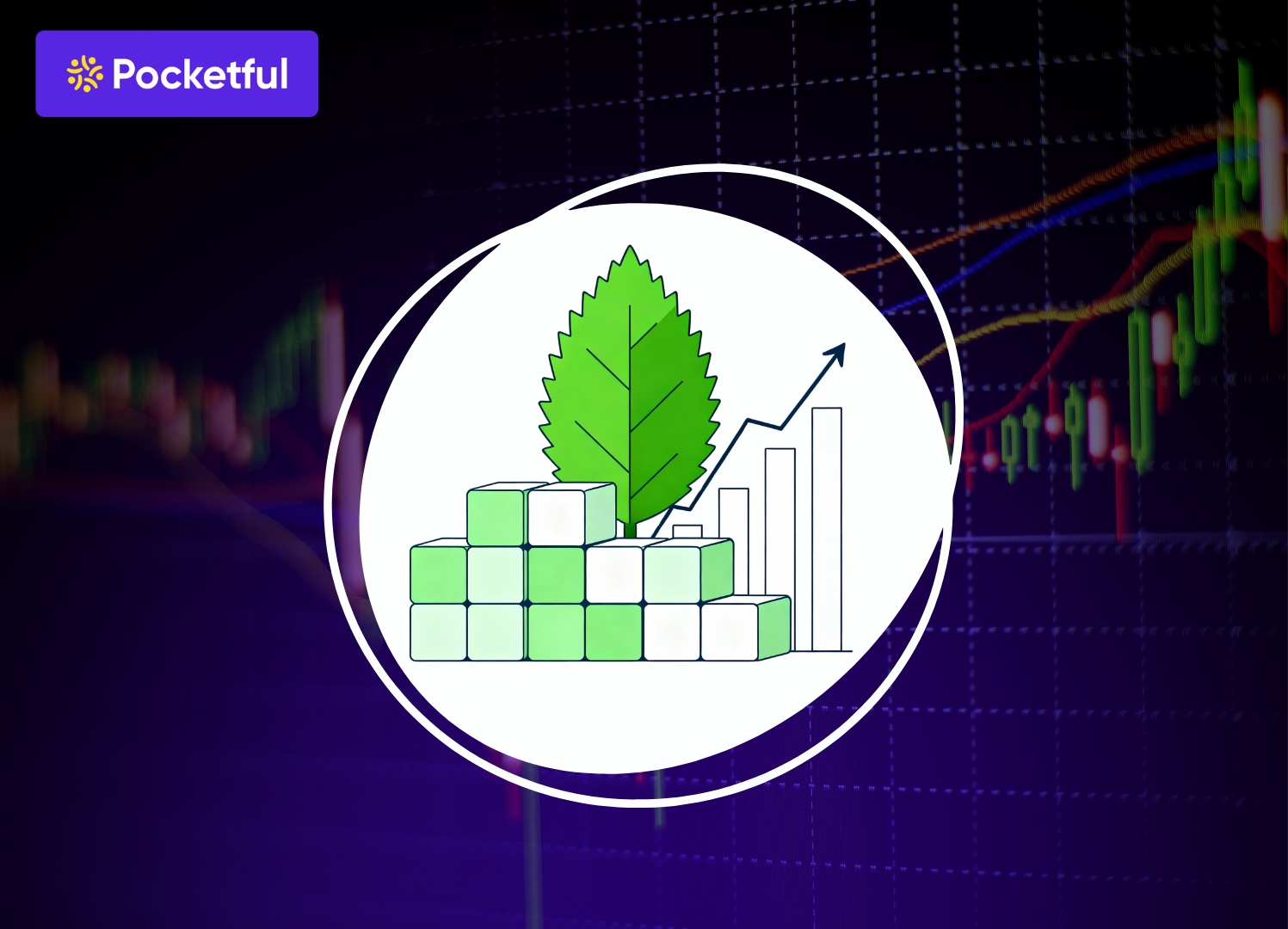The Indian Energy Sector is undergoing a rapid transformation and is shifting towards digitalization. The companies engaged in the manufacturing of Smart Meters play a key role in making the Indian Energy Sector innovative.
In today’s blog post, we will give you an overview of the top Smart Meter Stocks, along with the key benefits of investing in them.
What are Smart Meter Stocks?
Smart meter stocks are the shares of companies that are primarily engaged in the manufacturing and supply of smart meters, which are used to electronically monitor the consumption of electricity by a consumer on a real-time basis.
Top Smart Meter Stocks:
- Genus Power Infrastructure Limited
- HPL Electric and Power Limited
- Adani Energy Solutions Limited
- GMR Power and Urban Infra Limited
- Tata Power Company Limited
- Power Grid Corporation Limited
- Shivalik Bimetal Controls Limited
- RMC Switchgears Limited
- Permanent Magnets Limited
- Schneider Electric Infrastructure Limited
| Company | Current Market Price (INR) | Market Capitalisation (in INR crore) | 52-Week High | 52-Week Low |
|---|---|---|---|---|
| Genus Power Infrastructure Limited | 300 | 9200 | 486 | 237 |
| HPL Electric and Power Limited | 452 | 2915 | 640 | 339 |
| Adani Energy Solutions Limited | 948 | 113737 | 1091 | 588 |
| GMR Power and Urban Infra Limited | 124 | 8820 | 141 | 89 |
| Tata Power Company Limited | 399 | 127542 | 454 | 326 |
| Power Grid Corporation Limited | 292 | 270972 | 345 | 247 |
| Shivalik Bimetal Controls Limited | 485 | 2793 | 685 | 342 |
| RMC Switchgears Limited | 700 | 753 | 1214 | 518 |
| Permanent Magnets Limited | 981 | 843 | 1230 | 600 |
| Schneider Electric Infrastructure Limited | 839 | 19440 | 1055 | 517 |
Read Also: Best Semiconductor Stocks in India
Overview of Top Smart Meter Stocks in India
The overview of the top smart Meter stocks in India is as follows:
1. Genus Power Infrastructure Limited
Genus Power Infrastructure Limited was initially incorporated in 1992 and was initially known as Genus Overseas Electronics Limited. Genus Power Infrastructures Limited, which initially began as Genus Overseas Electronics Limited in 1992, is now one of the top companies in India for power meters and infrastructure. The company has transformed over time from making simple thick-film microcircuits and electronic meters to offering a wide range of solutions, including smart meters. It changed its name to Genus Power Infrastructures Limited in March 2007. Its headquarters are situated in Noida.
2. HPL Electric and Power Limited
The company was incorporated in 1992 and was initially known as HPL Socomec Private Limited. In 2015-16, the company converted itself into a public limited company and launched its IPO. The company has various manufacturing units in Himachal Pradesh, Haryana, etc. It offers metering solutions, switchgear, LED lights, and more. HPL Electric also exports its products to more than 40 countries. It has its headquarters in New Delhi.
3. Adani Energy Solutions Limited
The company was incorporated in 2013 and was initially named Adani Transmission Limited. Later in July 2023, the company changed its name to Adani Energy Solutions Limited. The company is primarily engaged in power generation, distribution and providing smart metering solutions. It provides end-to-end energy solutions. The company’s headquarters is situated in Ahmedabad.
4. GMR Power and Urban Infra Limited
GMR Power and Urban Infra Limited (GPUIL) is one of the biggest infrastructure companies in India. It primarily focuses on developing, operating, and maintaining power generation projects and urban infrastructure. The GMR Group, founded by Grandhi Mallikarjuna Rao in 1978, is a major player in the energy, airport, transportation, and urban infrastructure sectors. As part of a corporate restructuring in 2021, GMR Infrastructure Limited was demerged into two companies. The company’s headquarters is situated in New Delhi.
5. Tata Power Company Limited
Tata Power Company Limited company was established in 1919 and was initially known as the Tata Hydroelectric Power Supply Company. It was the first company in India to generate hydroelectric power when it opened its first plant in Khopoli, Maharashtra. The company operates in several different areas, such as traditional and renewable energy, and serves millions of customers across the country. The company’s headquarters is situated in Mumbai.
6. Power Grid Corporation Limited
The company was established in 1989 and was initially named National Power Transmission Corporation Limited. Later in 1992, it changed its name to Power Grid Corporation Limited. The company is very important for making sure that India has a secure and effective power supply by establishing and keeping up a strong national grid network. The company has its headquarters in Gurugram, Haryana, and works under the Ministry of Power of the Government of India.
7. Shivalik Bimetal Controls Limited
The company was founded on June 18, 1984, and started producing products for sale in October 1986. It was the first company outside of Japan to build a plant in Asia to make advanced Thermostatic Bimetal Strips. Shivalik Bimetal Controls Limited is a company that specialises in process and product engineering. It makes important parts that are used in many sectors, such as electrical, electronics, automotive (including electric vehicles), and smart metering. The headquarters of the company is in New Delhi, India, and its primary manufacturing plant is in Solan, Himachal Pradesh.
8. RMC Switchgears Limited
The company was founded on August 23, 1994, in Rajasthan, India, and was initially named “RFH Metal Castings Private Limited.” It started its operations in 1995 by producing meter boxes for Original Equipment Manufacturers (OEMs). After becoming a public limited company and changing its name several times, it finally adopted the name RMC Switchgears Limited in 2016. Since then, it has added turnkey Engineering, Procurement, and Construction (EPC) contracts for power transmission projects to its list of products and services. The company’s headquarters is in Jaipur.
9. Permanent Magnets Limited
The company was founded in 1960 and was one of the first in India to make magnets. It has grown with technology to serve both the Indian and international markets. PML has added soft magnetic parts, current transformers, and high-performance magnetic solutions for modern uses to its product line over the years. Permanent Magnets Limited is based in Mumbai, Maharashtra, India, and is becoming a more important player in the fields of magnetic materials and precision engineering.
10. Schneider Electric Infrastructure Limited
Schneider Electric Infrastructure Limited company was established in 2011 when Areva T&D India Limited separated off its distribution business. After that, it joined the global Schneider Electric Group, a French multinational which specialises in energy management and automation. Schneider Electric Infrastructure’s primary objective is to provide smart grid solutions, medium-voltage switchgear, transformers, and substation automation systems that help with the efficient and long-lasting distribution of energy. The headquarters is in Gurugram, Haryana, India.
Read Also: Best Multibagger PSU Stocks in India
Key Performance Indicators (KPIs)
| Company | Debt to Equity | ROE (%) | ROCE (%) | Operating Profit Margin (%) | Net Profit Margin (%) |
|---|---|---|---|---|---|
| Genus Power Infrastructure Limited | 0.73 | 16.67 | 19.95 | 21.19 | 12.28 |
| HPL Electric and Power Limited | 0.69 | 10.24 | 22.47 | 12.78 | 5.52 |
| Adani Energy Solutions Limited | 1.82 | 4.80 | 11.22 | 30.21 | 3.87 |
| GMR Power and Urban Infra Limited | 17.44 | 241.52 | 14.78 | 24.92 | 26.57 |
| Tata Power Company Limited | 1.62 | 11.07 | 10.18 | 17.29 | 6.08 |
| Power Grid Corporation Limited | 1.41 | 16.75 | 12.32 | 60.77 | 34.13 |
| Shivalik Bimetal Controls Limited | 0.08 | 18.99 | 24.60 | 20.61 | 14.82 |
| RMC Switchgears Limited | 0.55 | 29.36 | 40.68 | 16.22 | 9.92 |
| Permanent Magnets Limited | 0.08 | 10.93 | 14.35 | 11.30 | 7.68 |
| Schneider Electric Infrastructure Limited | 0.51 | 56.11 | 33.90 | 14.48 | 10.16 |
Read Also: Best Metaverse Stocks in India
Benefits of Investing in Smart Meter Stocks
The key benefits of investing in Smart Meter Stocks are as follows:
- Growth: The Government is spending heavily on improving the distribution of electricity to rural areas, which can increase the demand for Smart Meter Companies.
- Digitalisation of Energy Sector: Smart Meter is at the core of the digital revolution in the power sector, giving investors access to the newest energy technologies.
- Infrastructure: Smart Meter companies have more business opportunities as more people want smart grids and real-time data monitoring.
Factors to Consider Before Investing in Smart Meter Stocks
There are various factors which one should consider before investing in Smart Meter Stocks, a few of which are as follows:
- Companies’ Financials: One must check the company’s financial report, including its profit margins, etc.
- Competition: Knowing the competitive advantage of both established and new companies in the industry helps in identifying possible leaders.
- Raw Material Cost: Any increase in production cost due to an increase in prices of raw material and disruption in the supply chain can negatively impact the company’s profitability.
Future of Smart Meter Stocks
The future of Smart Meter Companies is very promising as the country is shifting towards an energy-efficient power system. Smart Meters allow remote and real-time monitoring of data. Over the years, it has increased the transparency in the consumption of electricity. And according to the National Smart Meter Programme, the government is planning to install more than 25 crores of Smart Meters across the country.
Read Also: Best Material Stocks in India
Conclusion
On a concluding note, investment in stocks of companies engaged in the manufacturing of Smart Meters provides an opportunity to participate in the revolution of energy’s digital transformation. The companies having a strong order book will have a consistent source of revenue over a period of time. However, investment in Smart Meter manufacturing companies also carries a few risks; therefore, one should check the company’s fundamentals before making any investment decision. Also, it is advisable to consult your investment advisor before making any investment.
Frequently Asked Questions (FAQs)
Name some Smart Metering Stocks?
The names of a few Smart Metering Stocks are Power Grid Corporation Limited, Adani Energy Solutions Limited, GMR Power and Urban Infra Limited, Tata Power Company Limited, etc.
Are Smart Metering stocks a safer investment option?
Yes, Smart Metering stocks are a safer investment option as this sector has strong growth potential in the long run. Along with this, it will benefit from the government contracts, and with the rise of demand for increased efficiency in the energy sector, Smart Metering Stocks can be considered as a safer investment option.
What are the risks involved while investing in Smart Metering Stocks?
As the performance of this sector primarily depends on the government policies hence any change in government policies could negatively impact the performance of this sector. Also, dependency on electronic components supply is a key factor to consider before investing in Smart Metering Stocks.
What are Smart Meters?
It is an electronic device which records the consumption of electricity on a real-time basis and allows remote monitoring of consumer consumption of electricity.










